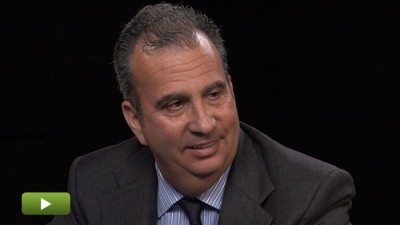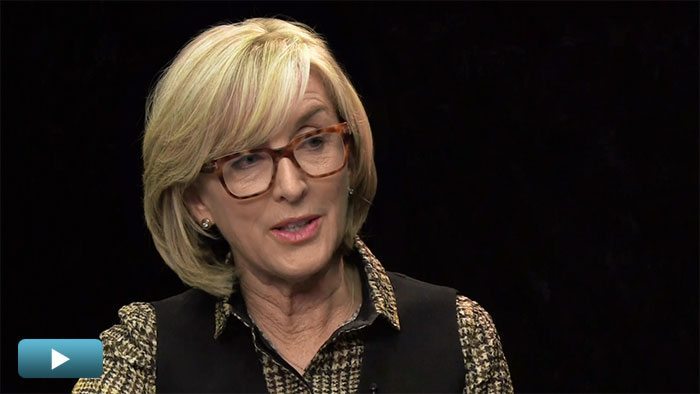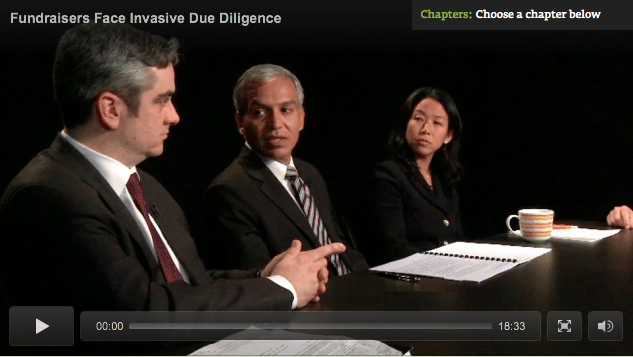Finding an Anchor Investor
New private equity firms looking to raise their first fund have several potential barriers to success. In this second of a three-part video series, a panel of experts from Proskauer, Eaton Partners, and Gen II Fund Services discuss why these emerging funds should find an anchor investor, and the terms that come with one.
Transcript Download Transcript
Finding an Anchor Investor
First-time Fund Formation
David Snow, Privcap: Today, we’re joined by Steve Millner of Gen II Fund Services, Charlie Eaton of Eaton Partners, and David Tegeler of Proskauer Rose. Gentlemen, welcome to Privcap. Thanks for being here.
Millner: Thank you.
Tegeler: Our pleasure.
Snow: We’re talking all about fund formation, specifically for first-time funds. Let’s talk about a strategy that many first-time funds use, which is securing an anchor investor to help launch their firm and give them additional credibility and, crucially, capital to get going. David Tegeler from Proskauer, could you help us by defining what an anchor investor is and why an emerging manager would want to seek one out?
Tegeler: An anchor investor or bell-cow investor can be that investor that comes in with a significant amount of money and says, “I will be an investor at your first closing. I will establish that you have a significant amount of capital right out of the gate. Other investors will follow me and, through that relationship, I’ll essentially help put you in business.” That bargain comes with a cost for the fund manager. The cost is often preferential terms—they can involve a discount on the management fee, a discount on the carry, preferential co-investment rights or strategic rights.
It can often be the difference between success and failure for a first-time fund manager because of the dynamics with LPs. And because people often like to sit and wait and see what happens.
Snow: Charlie, would you recommend to an emerging manager to seek out an anchor investor? If, so what kind of an institution would that tend to be?
Eaton: I probably would recommend, in most cases. It might take two years to raise a first-time fund. But the sooner you can get a first close, the sooner you’ll get that fund fully raised, because usually there is a year between first close and final close. A certain amount of money that would be required (maybe it’s 20% of the ultimate target size). Maybe you can get away with a little less than that, but if you’re trying to raise a $500-million fund, it would be nice to have a first close of $100 million. And that comes from your own capital and then a few outside endorsements or commitments, hopefully with good names. Because it does matter who your strategic investor is—there are some that will probably hurt you and some that would be very meaningful and add real credibility to what you’re doing. For example, corporate sponsors or big bank sponsors are not necessarily that desirable as anchors.
Snow: From your experience, Steve, what are these cornerstone investors looking for? Why would the ability to back an emerging manager be attractive to them?
Millner: What we’ve heard is that when an anchor comes in, it’s a strategic investment. They’re looking to do two things: on the one hand, they like the team and they lack the opportunity set. There is a trade for that backing. That trade can be in the form of reduced fees or preferred co-investment rights or even having some type of rights in successor funds that the sponsor launches. So they’re looking to enhance their return set by coming in on an early round.
Snow: But in a certain regard they are a regular LP and they’re looking for a credible investment team to back, right?
Millner: Our experience is [that] when an anchor comes in, they expect that the sponsor they’re backing will be successful and that they’re going to have all the resources in place to make that happen. The addition of a strategic or anchor investor enables or provides a catalyst for the sponsor to go out and be more successful in the market. But it also comes with additional responsibilities, especially on the reporting and governance side.
Snow: David, as you have overseen negotiations between an anchor investor and an emerging manager, what have been some sticking points as far as terms and conditions?
Tegeler: If you split it up into a couple of different categories, one obvious one is the economic deal. What is the economic deal going to be? The dynamics of that are pretty straightforward. How deep a discount on the management fee are the fund managers willing to give the anchor investor? How much of a break on the carry are they willing to give? How many funds are they willing to give in terms of follow on rights to this particular anchor investor? All of those, I think, are in the parameters of negotiation, each unique to each particular investment group. What can be very challenging, as Steve mentioned, is that there are upper-tier entities. There is the general partner and the management company. And, often, part of the bargain is that the anchor investor wants to get a seat at the table in the general-partner entity or a seat at the table in the management company. And as they start to get more seats on different committees and groups within the infrastructures of the firm, the fund manager’s autonomy starts to become somewhat different.
Snow: Charlie, you mentioned that having a credible anchor investor obviously lends credibility to the GP they’re backing. But do you ever run into a situation where, because of these bargains that are struck with the anchor investor, the other LPs to be shown the opportunity are resentful or don’t like the…special alignment the GP has with its anchor?
Eaton: The first thing is did they give away too much? I’ve seen situations where the anchor investor has as much as, say, 50% of the economics of the fund. That’s probably a tough one to overcome. I saw another one where the anchor had 35%. That was also tough. If you give away too much, then it becomes a bit of an issue with some of the LPs.
Tegeler: It’s worth mentioning [that] there is a spectrum here. When you’re talking about funds with outside support, there are captive funds, which are essentially in-house investment programs for larger organizations. Often, most or all of the carry goes to the house in those situations.
Snow: Steve, from an administrative point of view, what is challenging or unique about the fact that an anchor investor is also part of the management company, perhaps getting some of the economics? What do GPs need to understand about the complexities when that’s in place?
Millner: When an anchor investor is introduced, [their] reporting requirements also become introduced. [For] example, we had a situation where one of the anchor investors was a bank. Our requirement was to provide information upstream to the bank within three business days following the quarter end, as compared to normal standards, which might be 45 days. When you insert an anchor, the anchor-specific requirements become frankly foremost to the equation.
Snow: Charlie, without necessarily naming any names, [do you have] any anecdotes to share of an anchor investor coming in and fundamentally changing the way that GP group operates in ways they maybe they did not anticipate?
Eaton: We had two instances maybe three or four years ago where we were representing funds that were part of larger organizations—banks in two different cases. Well, Dodd–Frank and Basel III came along and changed the whole requirements, the rules and [regulations] they had to live with. In both cases, these funds just fell flat. We couldn’t raise them because the regulatory issues that were brought up just changed the whole game. The problem was that they could no longer invest in these subsidiary teams that they had because of the regulations.
Tegeler: Some examples of regulations that impact groups in that type of a way include Dodd-Frank, where the decision to have a firm registered or be exempt from registration could hinge on what types of sub-entities or separate accounts you have as part of the firm structure.
Millner: We’ve seen a number of situations where, as a result of the Volcker [Rule], banks are spinning off their PE businesses and essentially giving the management team there the opportunity to become a first–time fund. These organizations are very interesting because they come from an environment that’s highly regulated. They had a substantial amount of capital. They had a big brand behind them and now they’re entrepreneurs. And the sea change of becoming an entrepreneur, both in terms of the operating responsibility and the regulatory environment you work under, is interesting.








